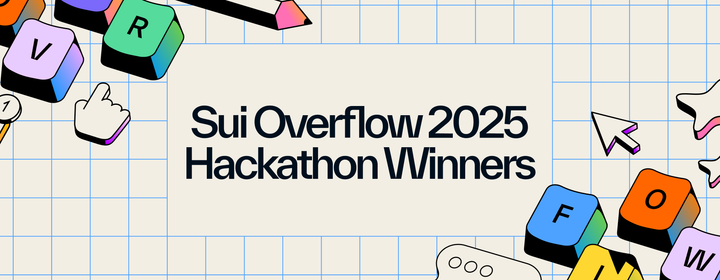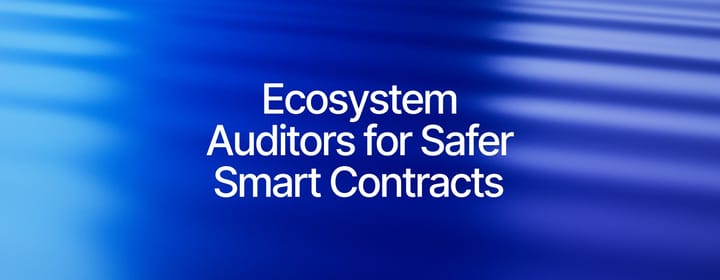EasyA Educates the Builders Behind the Next Big Web3 App
Phil and Dom Kwok, the founders of EasyA, on their past, present, and future as Web3 education entrepreneurs
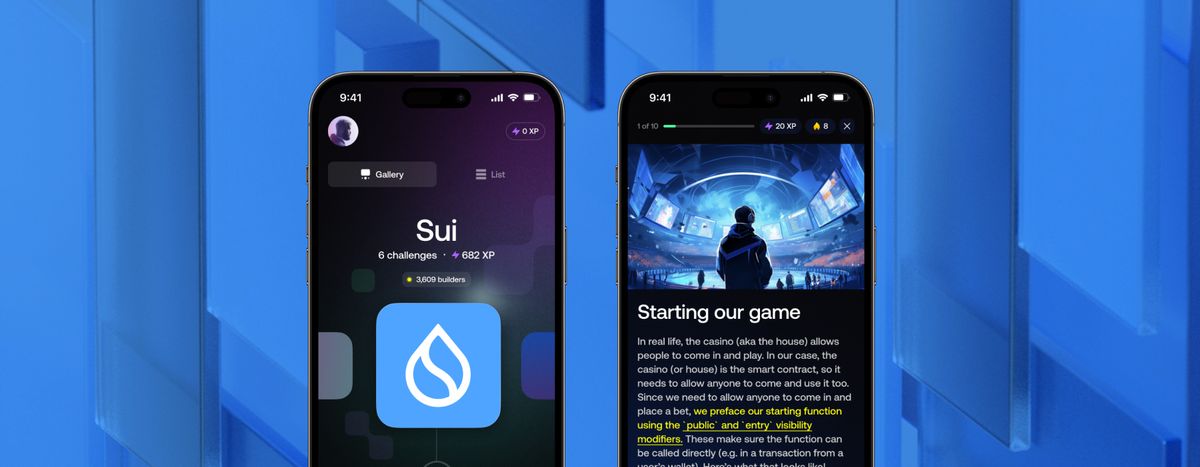
Recently we sat down with Phil and Dom Kwok, brothers and co-founders of the Web3 education mobile app, EasyA. This education app uses learning modules and coding challenges to teach developers about different blockchains and their unique features. They launched their first Sui module in early October and have continued to release new modules over the subsequent weeks. Phil and Dom started in blockchain over a decade ago, and have a storied history in building groundbreaking startups. Learn more about their path from traditional law and finance careers into their current role as leading blockchain entrepreneurs, helping educate and support developers they believe will build the next Web3 unicorn.
Let’s start with a brief introduction to who you are and what you're building.
Phil: I’m Phil, co-founder of EasyA with my brother Dom. I grew up in London and then I did my undergrad in Law at Cambridge. I worked at Sullivan & Cromwell and was one of the youngest people to qualify as an attorney in New York . While we were at university, we co-founded a couple of marketplace startups together, and then we worked in New York, but eventually moved back to London in late 2019. EasyA launched in 2020. So, while my background is in the legal profession, I’ve been a software engineer for many years now. I started coding when I was about 13 years old. Dom and I built the first version of the EasyA app from scratch. Dom was on the front end. I was on the back end.
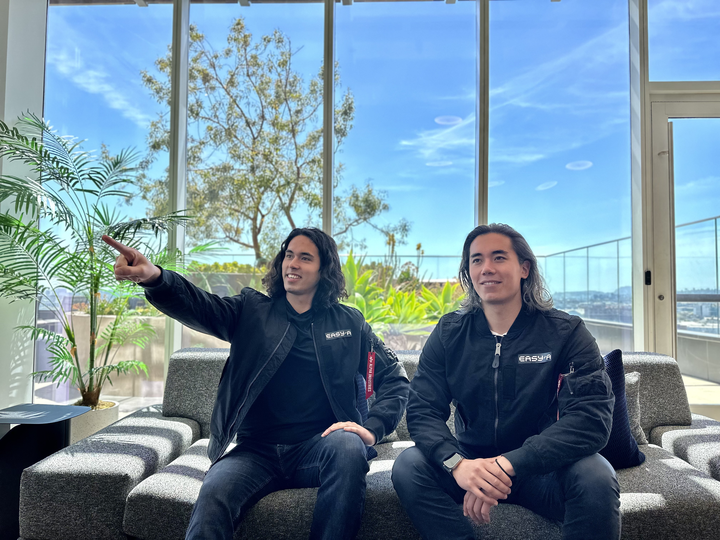
Dom: I graduated from Penn, where I studied finance at Wharton, in 2018. Shortly after graduating I worked at the Blackstone Group and was recruited by Travis Kalanick (founder of Uber) as one of his first hires at his new startup, CloudKitchens. Together with Phil, my brother and co-founder, we launched EasyA in late 2019, early 2020.
You both come from fairly traditional career paths originally: law and finance. What drew you to blockchain and how did you decide to make it a career?
Phil: It really goes back about 10 years. I began mining Bitcoin in 2013. It started off very small and grew gradually. Then, we made our foray into consumer marketplaces at university. We founded two startups focused on the consumer side. For EasyA, we joined those experiences together—think of EasyA almost as a marketplace, but for knowledge. People have questions and they want to learn. We built our app to match people who wanted to learn about a particular technology to the ways they could learn about it. Matching interests together.
You mentioned you were a Bitcoin miner. Was that because it seemed like a challenge, or was there something particular about the philosophy or concept of decentralized tech and blockchain that made you think, “I want to do more than just read about this”?
Phil: It started with a whitepaper. I was at school, sitting in the computer gallery, and I came across this paper that talked about how, essentially, there would be this system that would run on its own without anybody being able to shut it down, but it was also very liberating in many respects. It would allow anybody to transfer money across the world for a fraction of the cost of normal bank transfers. It would create truly native internet money, and I was just captivated by it. So after that, the first thing I did when I got home was go straight into my parents' basement, and read everything that I could about it. I read pretty much everything about those four and three letter acronyms related to the Bitcoin world–FPGAs and ASICs, GPUs and PSUs—all the hardware that you'd need to set this up. I was just 16 years old and I was taking it in as much as possible. At the end of the day, I had a passion for this technology that I felt was really, truly transformative but at the same time embodied a rebellious philosophy. And I think, as a teenager, you're pretty rebellious. You try to rebel against any sort of authority. Bitcoin matched that feeling, and in many respects, aligned with what I was looking for at the time.
Were you working together on this at that time?
Dom: We've been interested since the same point in time, our high school days. But we ultimately decided to go to university and pursue law and finance respectively, until ultimately deciding to join the blockchain sector and focus on the education front because that's one of the places we saw a gap. A lot of our friends were launching Layer 1s, Layer 2s, and a lot of other cool technology, but not enough people were building on them and learning about their use cases. So, we decided to solve that problem by creating the EasyA app.
What made you believe you had the right solution to address this big opportunity?
Phil: In some ways, it all happened rather fortuitously. When we started EasyA, it was a knowledge marketplace, essentially a way that people could connect with STEM experts on demand. Let's say I was a student and I needed to ask a question, maybe about a bit of coding, maybe about a bit of maths or science. With EasyA you could connect with an expert on the subject, like Uber for knowledge or asking questions. That was the beginning. We were growing very rapidly. And at the same time, flash forward a little bit, and we were then chatting with some of our friends who were in the blockchain community. And they said, if you're building this massive community that is super smart, from some of the best universities in the world, could you just try getting them to build on our tech too? And we thought, “Okay, why don't we try this? Let's try bringing together these different people to build on some of these blockchains.” And it was just a massive hit. Our community loved it. We were able to bring so many new people into the ecosystem. And that was the beginning of something very big, and something very special.
And now you solely focus on blockchain education.
Phil: Blockchain became the core part of our community and eventually we decided that, since this part of the community is growing so fast, we just had to double down, triple down, quadruple down on it. And obviously, that's what's led to our success as the biggest Web3 education app today.
What are the biggest challenges for education in the blockchain space? What is unique about this space when it comes to helping developers learn?
Dom: To start off, we need to show people why they should be interested in blockchain. Why is blockchain so important for the future? What are the benefits of decentralization? Really making sure that people are aware of the advantages of blockchain.
Another challenge is that everything in that space is so new. And there's so many different companies and different chains trying to tackle the same things. Everyone wants to create a chain that's faster, more reliable, and so on. So really showing our learners what the differences are between Sui and some of the other chains out there. Focusing on why they would learn about Sui versus Solana versus other chains is super important. We start at the foundational level, and then introduce them to some of the more niche blockchain concepts in terms of coding. Learning Solidity, learning different languages, that's going to be helpful for them as they continue their journey in a particular ecosystem. It all stems from how new everything is.
There's so much to educate people about, it’s really a matter of figuring out the best place to start and then what tracks and routes to lead people down.
Are most people using EasyA new to blockchain or transitioning from building on one chain and trying to learn about another?
Dom: We really get people from the top of the funnel all the way down to the bottom. A lot of them are new to blockchain. A lot of people come from Web2, from traditional fields, and they just want to figure out more about blockchain. But then we have a lot of people who are already in the space. They come into EasyA looking to learn about one chain, but then they see a bunch of different options inside the app on the home screen, start scrolling through and going down different rabbit holes. So I'd say, it's a relatively even split between both. There's a lot of people who are not familiar with blockchain but are tech savvy and have heard about Web3 from their friends online, and they want to find a really easy way to get into the space. And that's ultimately why we have this app as opposed to taking them right into docs, manuals, workshops, and so on. It's all about captivating those people who have that interest, whether they're from a Web2 or a Web3 background, and then showcasing the powers of blockchain through the app.
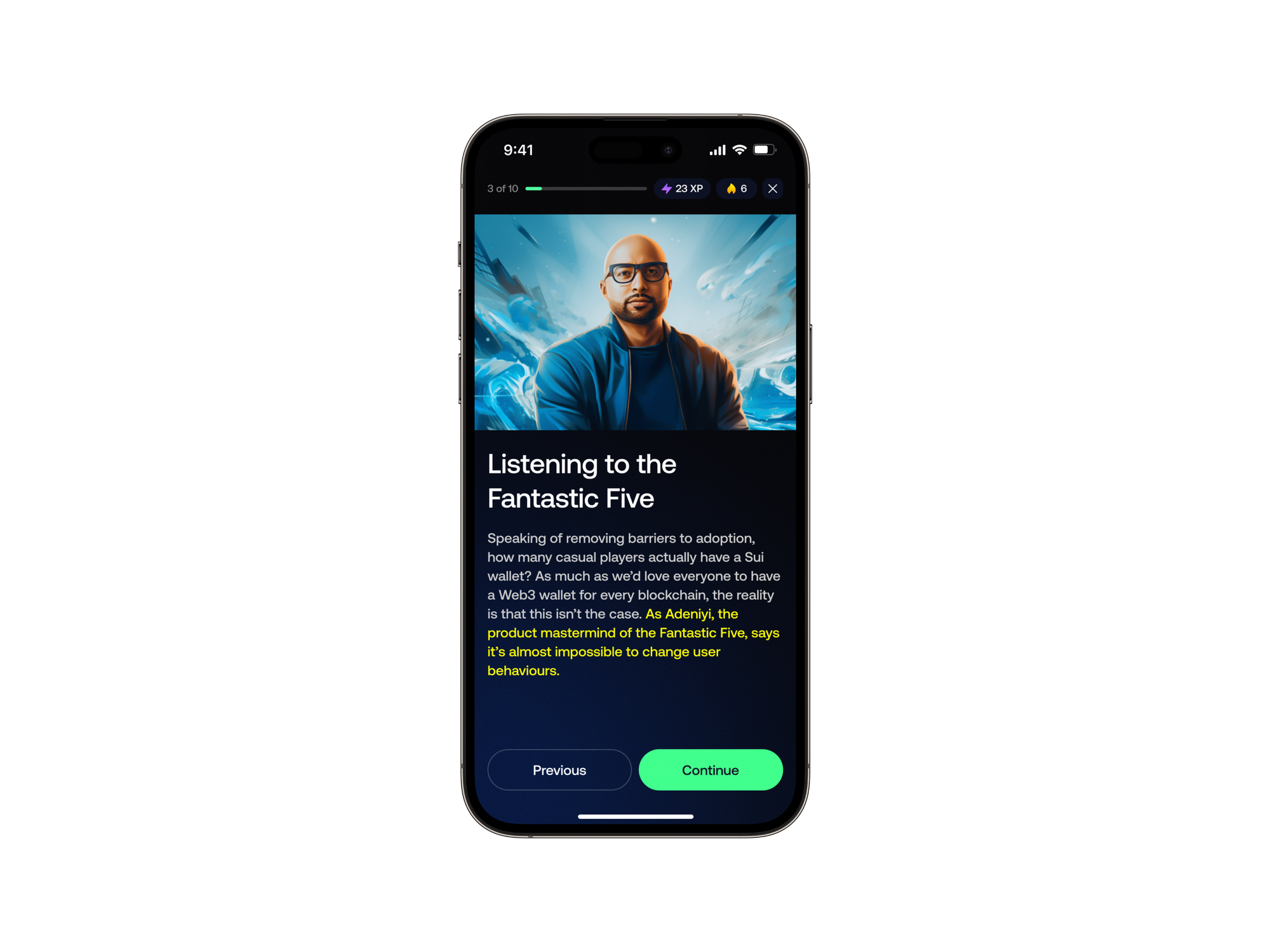
What’s some advice you would give to others in the industry who are trying to attract people to build on their blockchain or with their tools?
Phil: For over 10 years, we've seen that, if you really want to have staying power, if you really want to attract developers, it boils down to attracting the best minds. And the only way to do that, same as any other technology, is to inspire. The best projects we’ve seen for attracting developers and builders into their ecosystem over the long-term are capable of this. For me, that was Bitcoin. It was the intrigue of the whitepaper and understanding the huge potential that this technology had. And what we try to do is to replicate that inspiration and that feeling.
Developers might enter an ecosystem for one reason or another. They might be attracted because it's new or they like the sound of the technology. Maybe one of their friends told them about it. Maybe they're looking at the token price, and they think it looks interesting. None of that is actually going to get somebody to continue building and remain in an ecosystem. The only way is to inspire. And that's what we work so hard on and where obviously we become world leaders and inspire developers as to which particular technology they should really be building on and the potential that they can build as well.
When you started working with Sui, what were the features that you believe can serve as an inspiration for developers?
Phil: There are two parts, the technology and the story of the founders. It’s maybe a false dichotomy to separate the founders and the technology, as they built the technology. I often think about something Adeniyi says, that Sui has been built from the ground up. It was able to put aside all of the technical debt that a lot of other blockchains have, and build something afresh. That really stood out for me. I want to know what this actually means, not just building on but actually building from scratch, something which took all those problems and said, this is how we solve them. Things like smart contract hacks that we know happen all the time. That’s solved with Move. High gas fees, how do we solve that? With a novel consensus mechanism. Where some single writer applications are able to bypass traditional consensus. All those things are important, but at the end of the day, a big part of that is also weaving in a narrative.
The story of the Fantastic Five, as we've called them in the EazyA app, the five founders who started Mysten Labs which was the original contributor to the Sui blockchain. That's where we've brought together all their expertise. So for example, with Sam Blackshear, we've been able to tease apart his experience actually working on the programming language level, all the stuff he did at Meta and previously Facebook, to solve the problems he saw firsthand. That forms the narrative of why we have the technology. And it all just fits in context, rather than simply saying, Sui has a TPS of X. It’s about making those numbers real, something that people can understand and relate to.

Dom: Building on what Phil was saying about the story, and weaving in all of the different founders, our learning philosophy is about creating a narrative around each challenge that we launch, and each module within those challenges that we launch, that really enables people to follow along and actually want to dive deeper beyond the technology itself. What we've seen over the last couple of years, and really since getting into blockchain, is that a lot of technology is fascinating but, at the same time, it's very complex and so technologically advanced that people don't really always understand it and have a good motive to actually get into it. Having that personal touch, having that connection to the characters in a story, that helps people understand what the tech is all about. It’s really important. And that's why we've seen the course completion rates be super high across all of our courses. I think for Sui, it's around 70 plus percent, which is pretty much double or even triple what comparative e-learning courses would be.
What's next for builders when they finish your learning modules?
Phil: Our mission is to bring developers into Web3. The app sits right at the top of that journey. After they've completed the in app challenges, there are a number of different things that they can do. One is, of course, the hackathon. That is usually the pinnacle of these developers' experience. They will do the challenges and then put that knowledge into practice and build out spectacular projects. And then what happens afterwards is we support them and encourage them to build and continue that project. In a similar way to how Y Combinator (YC) has these pinnacle moments where there’s demo day, then you go out and raise afterwards, hackathons perform a similar role. In the past couple of months, we had teams who have raised from a16z, who are going through the next batch of YC, for example, who have raised from other ecosystem partners such as Polygon Labs.
The EasyA app is just the beginning, and the hackathons are still just the beginning. We're early, and for all these projects, our job is to support them as much as we can. We want these projects to become real startups. So what happens afterwards? Well, it's time for them to build their startups. We want to see the next Uniswap, the next big apps coming out of the EasyA app.
What are the barriers to that pathway being successful for people? Where are the gaps in how the industry might better support developers after they have begun the learning process so that they stay in Web3?
Phil: Good question. With EasyA, we're essentially building a full on funnel to avoid those kinds of leaky buckets. As an industry, we have a problem where there are all these different touch points, but there's nothing that really joins everything together and keeps people engaged. EasyA is about patching up those holes and bringing something together.
I think perhaps the most pervasive issue is that developers don't typically see the long-term roadmap. Developers may come into an ecosystem and say, “I love this blockchain. I think it's really exciting.” And then they'll start learning about it. But what happens next? Or maybe they’ll go to a hackathon. And again, what happens next? They've just built a cool project but what can they do now? Or maybe they’ve even got a little bit of funding from the hackathon. What happens next? We’ve got to consistently make it very, very clear to builders and developers what they can do next. And that's what we've been really successful in doing—showing developers you may have done the EasyA app but that's not the end. You've done the hackathon. That’s not the end. It’s about showing them the available opportunities.
For example, with Sui, there are grants, there's general education, there's several ways of connecting those dots together. And that's what we found has been the most successful in actually inspiring those developers, and at the end of the day, retaining them, keeping them in the system and helping them to build really big successful projects.
What is next for EasyA as a company and a community generally? And, more broadly, how do you see the world of Web3 development evolving particularly as we exit the crypto winter?
Phil: This year has been a year of immense growth for EasyA. At the end of last year, we hit half a million developers in our community. This year, we're on track to hit a million. As we look towards 2024, we are really building this ecosystem of developers into the people who will take their projects, and what they've learned over the past year or so, and build that into the next big thing.
We’ve come into the next phase of Web3, and as we come through this crucible moment for the industry, we want to support those builders and show them it's time to go big so we can attract the next billion people to use their apps. I think we're gonna see a whole wave of new users coming into the ecosystem because of the startups that we're building. Hopefully, 2024 is going to be when EasyA develops the next big unicorn because of the intentional work that we're doing to support those startup founders.
Dom: In terms of the future of Web3 education and Web3 development, we'd say the future is mobile. A lot of people so far are building for web, building for desktop. But most internet traffic is actually conducted through mobile. That’s true in the West, but also obviously in Asia and other areas where people may have a phone but not necessarily a computer. For us, educating people in all parts of the world about Web3 through their phones is really where we see the future headed for us and the key to onboarding Web3’s next billion users.
From our perspective, the future is definitely mobile. And the future of learning is gamified. Enabling people to learn and develop things in a really fun manner, as opposed to just sitting through workshops, and sitting through watching a bunch of talks on a computer. Web3 education is still very far behind in terms of resources available to people compared to Web2. What we're doing, and hopefully what others will continue to do in this space as well is, make things interactive, gamified, and mobile. Like Duolingo did for language learning. They lead the way with their mobile app, and just making things fun and easy to learn.

